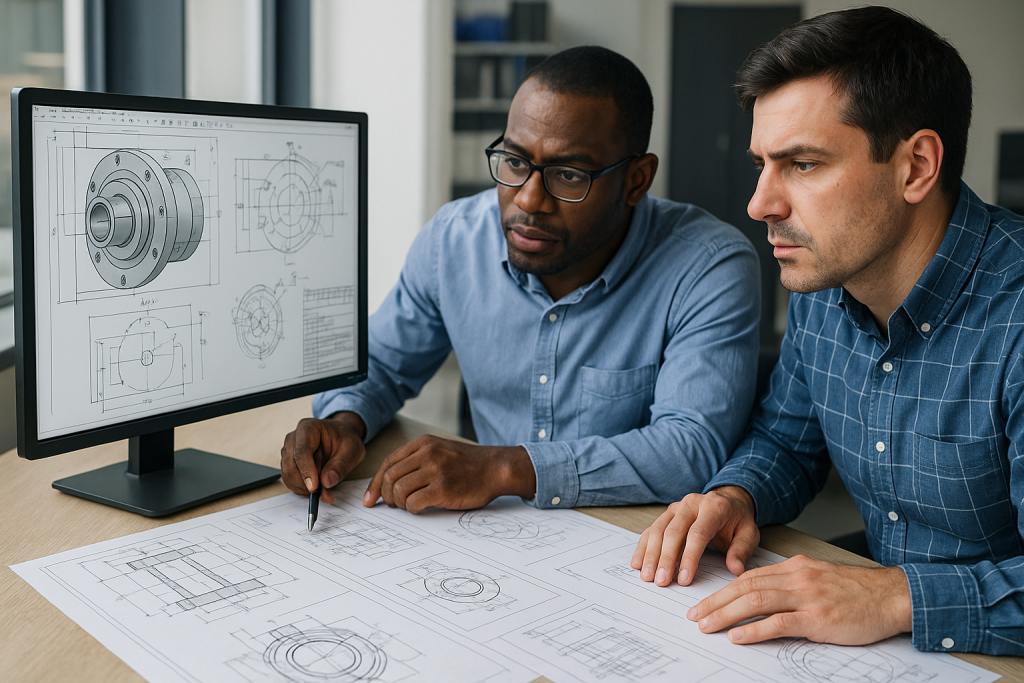
As the electric vehicle (EV) industry surges forward, manufacturers face increasing pressure to deliver components that are lightweight, reliable, and precisely engineered. From battery enclosures to drive units, the demand for tight tolerances and rapid iteration is pushing production methods to the limit. This is where CNC (Computer Numerical Control) machining steps in — offering unmatched accuracy, repeatability, and adaptability for modern EV components.
CNC machining plays a vital role in every phase of EV manufacturing, from rapid prototyping to full-scale production. With capabilities in high-precision metal and plastic machining, companies like Boona Prototypes are enabling automotive innovation by delivering custom EV parts with speed and precision.
I. Why CNC Machining is Crucial for EV Manufacturing
| Key Advantage | Description |
|---|---|
| High Precision | Micron-level accuracy for mission-critical components |
| Repeatability | Ideal for mass production with consistent quality |
| Versatile Materials | Supports aluminum, titanium, copper, stainless steel, and engineering plastics |
| Scalable Production | Flexible for one-off prototypes and full-volume parts |
| Design Freedom | Accommodates complex geometries and rapid changes |
EV manufacturers must meet increasingly stringent performance and safety standards. CNC machining ensures parts are made exactly to spec, reducing the risk of defects in battery systems, drivetrains, or electronic components.
II. CNC-Machined EV Components
1. Battery Housing and Cooling Plates
The battery system is the heart of an electric vehicle. It requires robust, lightweight enclosures with integrated cooling pathways.
Boona Prototypes specializes in aluminum and copper CNC parts for battery modules. Their advanced machining systems deliver tight tolerances for heat-dissipating components and pressure-sealed enclosures.
Typical Specs:
| Component | Material | Tolerance | Function |
|---|---|---|---|
| Battery Enclosure | 6061 Aluminum | ±0.05 mm | Protection + Heat Control |
| Cooling Plate | Copper Alloy | ±0.02 mm | Thermal Regulation |
👉 Learn more about CNC aluminum machining at Boona Prototypes.
2. Electric Motor and Drive Components
CNC machining is essential for components like motor housings, stator casings, rotor shafts, and gearboxes. These parts must withstand high torque and rotational stress.
Boona’s 5-axis CNC capability ensures complex geometry, accurate alignment, and vibration-resistant performance in drivetrain components.
Common Applications:
-
Electric motor casings with internal cooling fins
-
Shaft and bearing supports with high concentricity
-
Gearbox mounting plates
3. Thermal Management Components
High-performance EVs require precise thermal management. CNC-machined heat sinks and aluminum liquid cooling plates help regulate temperatures in battery packs and power electronics.
Sample Cooling Plate Data:
| Parameter | Value |
|---|---|
| Material | 1100 or 6063 Aluminum |
| Channel Depth | 1.0–3.0 mm |
| Surface Roughness | Ra ≤ 1.6 µm |
| Flatness Tolerance | ≤ 0.1 mm |
👉 See Boona Prototypes’ Rapid Prototyping Services for thermal and fluid system components.
4. Structural and Mounting Assemblies
CNC-machined structural brackets, suspension components, and chassis reinforcement parts are often made from steel or titanium alloys to ensure strength without excess weight.
Precision holes, slots, and surface alignment are critical in high-load applications. Multi-axis machining reduces operations and enhances accuracy.
III. Benefits of Working with Boona Prototypes
Boona Prototypes offers a full suite of custom CNC machining services tailored to the automotive and EV industry:
-
✔ ISO-certified production standards
-
✔ Rapid 2–3 day prototyping turnaround
-
✔ Support for CAD file formats: STEP, IGES, STL
-
✔ End-to-end DFM (Design for Manufacturability) support
-
✔ Tolerances as tight as ±0.01 mm
They also integrate other advanced manufacturing services such as SLA 3D printing, sheet metal prototyping, and plastic injection molding, making them a one-stop solution for complex EV component development.
IV.Challenges and Future Trends
Despite its advantages, CNC machining in EV manufacturing also faces challenges:
| Challenge | Potential Solution |
|---|---|
| High cost of exotic materials | Material-efficient toolpaths, hybrid fabrication |
| Long setup time for small batches | Automation, modular fixturing |
| Complex geometries in designs | 5-axis CNC, additive+CNC hybrid workflows |
Looking forward, the integration of AI-based toolpath optimization, generative design, and digital twin simulations will further enhance CNC’s role in the EV space.
Conclusion
CNC machining is not just a manufacturing method — it’s a core enabler of electric vehicle innovation. From battery systems to drivetrain parts, its precision, speed, and adaptability make it ideal for the fast-evolving needs of the EV sector.
With partners like Boona Prototypes, companies can accelerate their product development cycles, achieve production-grade quality, and stay competitive in the global EV race.
FAQs
1. What is CNC machining and why is it important in EV manufacturing?
CNC (Computer Numerical Control) machining is a subtractive manufacturing process that uses computer-controlled tools to remove material from a solid block to form precise components. In EV manufacturing, it is essential for producing battery housings, motor parts, and cooling systems with extremely tight tolerances and consistent quality.
2. Which EV components are typically made using CNC machining?
Key EV components manufactured using CNC machining include:
-
Battery enclosures and cooling plates
-
Motor housings and shafts
-
Power inverter casings
-
Suspension and structural brackets
-
Gearbox and drivetrain parts
3. What materials are commonly used in CNC-machined EV parts?
CNC machining supports a wide range of materials critical for EVs, including:
-
Aluminum alloys (e.g., 6061, 7075) for lightweight strength
-
Copper and brass for electrical and thermal conductivity
-
Stainless steel for structural components
-
Engineering plastics like PEEK and nylon for insulation
4. What are the tolerances achievable with CNC machining in EV applications?
Most CNC-machined EV components can achieve tolerances as tight as ±0.01 mm, depending on part complexity and material. This is essential for components like drive shafts, bearing housings, and thermal management parts.
5. How fast can CNC-machined EV prototypes be produced?
Rapid prototyping with CNC machining can be completed in as little as 2–3 days, especially when working with a professional partner like Boona Prototypes, which offers express service for urgent EV development projects.
6. How does CNC machining support thermal management in EVs?
CNC machining enables the creation of precision cooling plates and heat sinks with integrated channels for coolant flow. These components ensure efficient heat dissipation from battery packs and power electronics, helping to maintain optimal vehicle performance.
7. Is CNC machining suitable for both prototyping and mass production of EV parts?
Yes. CNC machining is highly scalable. It is ideal for both low-volume prototyping and medium-scale production, especially when consistency, quality, and dimensional accuracy are critical.
8. Can CNC machining be combined with other manufacturing processes?
Absolutely. Many EV manufacturers use hybrid workflows — for example, combining 3D printing for rapid prototyping with CNC machining for high-precision finishing. Companies like Boona Prototypes offer integrated services across both.
9. How does CNC machining contribute to lightweighting in EVs?
By precisely machining aluminum and titanium components, manufacturers can reduce overall vehicle weight while maintaining strength and structural integrity. Lightweighting improves EV efficiency and driving range.
10. What should I consider when designing EV parts for CNC machining?
When designing for CNC, consider:
-
Avoiding undercuts unless using 5-axis machining
-
Designing with tool access and fixturing in mind
-
Using standard hole sizes and fillets for better machinability
-
Discussing DFM (Design for Manufacturability) with your machining partner early
👉 Boona Prototypes offers expert DFM support to ensure your designs are CNC-ready.



